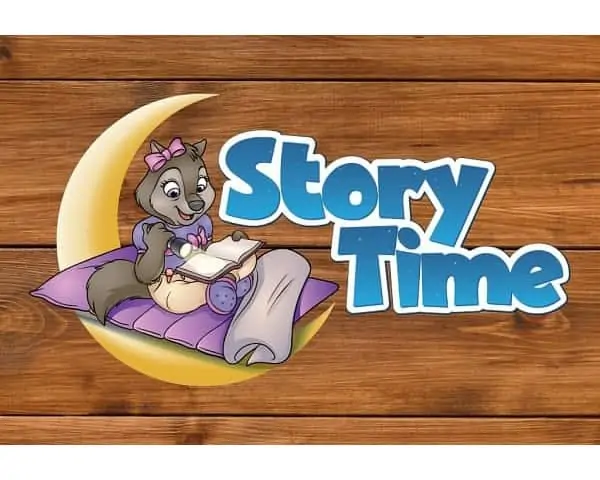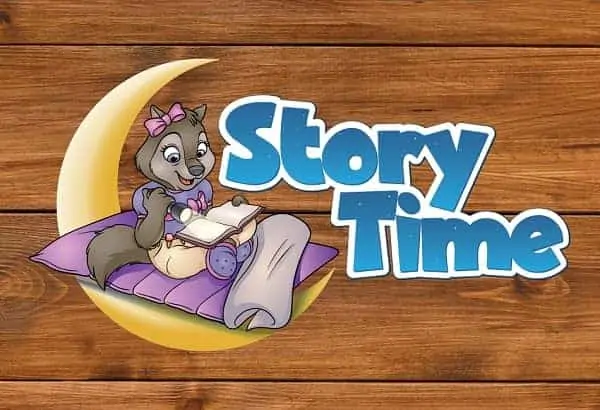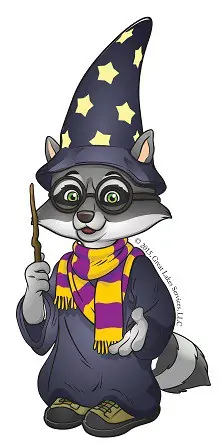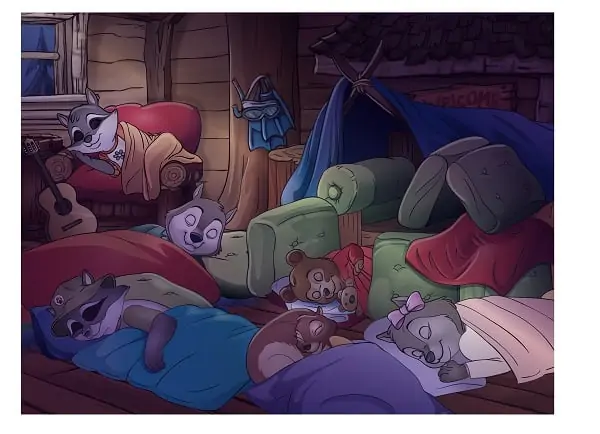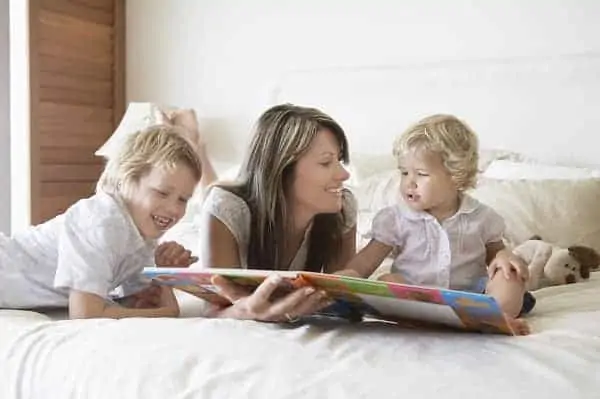Simple ways to go from reading a story to becoming a storyteller
Who doesn’t love a good story? Having originated through visual stories and cave drawings, storytelling has become a popular bedtime ritual for kids all over the world.
These days, there are a lot of different options to entertain, but for little kids, the choice is obvious. They want to head to bed with a story, of course!
Storytelling for children is a great way to connect after a busy day apart. It also helps introduce them to new words and practice their listening skills, which are important components to their development.
Still, reading stories for kids doesn’t always come naturally, so we put together our very own video and guide to help coach you through the process.
While we’re not saying you’re going to become the next Shakespeare, the tips below should help keep your kids hanging on your every word!
How to Become a Better Storyteller
1. Select your book
Of course, there are tons of options out there to choose from. Maybe your child has a favorite series they want to continue with. Or, maybe the kids at school have been talking about a certain story they want to experience.
Talk to your little ones and see what sparks their interest. If you’re looking for suggestions, we recommend our Isn’t Nature Great, a springtime story featuring all of your favorite Great Wolf Kids!
2. Set The Mood
Remember, ambiance is important. There are certain ways to set the mood to ensure a successful storytelling endeavor. Listed below are a few friendly tips:
a. Accessorize. Find some props that help you set a scene related to the story. This will help keep the kids engaged in the process and prevent them from wandering over to nearby distractions.
b. Add some drama with a musical undertone. Music is a great way to engage the senses during story time. It’s also a pretty reliable way to secure an emotional connection to the characters.
c. Lower the lights. There’s a reason why they dim the lights at the theater! Lowering the lights can help eliminate surrounding distractions and keep your kids focused on the story. It’s also a great way to get them settled down and ready for bed.
3. Make an entrance to start the story and settle into the scene you created
What better way to grab the kids’ attention than appearing out of your everyday clothes and in something a bit more imaginative? The more fun you have with it, the more likely the kids will too!
Get in costume. Add some fun costume pieces that embellish the story or define you as a storyteller. Remember, storytelling is all about using your imagination. What better way to step into the story than dressing as if you are already part of its reality!
4. Find ways to engage your audience
a. Create a craft to be used in the story. If you’ve decided to kick off your storytelling tradition with Isn’t Nature Great, you can use this paper hand puppet activity sheet!
b. Identify places in the story to:
-
- Make sound effects. Here’s a great opportunity to get the kids involved. Decide as a family what kind of sound effects you want to add into the story. Maybe each character gets their own special sound effect, or maybe a silly sound emerges each time you turn the page. Try assigning a certain sound effect to everyone involved in the storytelling circle.
-
- Ask them questions. Again, it’s all about keeping the kids engaged. Asking questions throughout the story means they’ll be more likely to pay attention. It’s also a good way to assess their listening skills, memory, vocabulary and understanding.
5. Make it a nightly tradition
The earlier you introduce your kids to good habits, the more likely they are to adopt them. Reading is one of the few recreations kids have left that doesn’t require an outlet. Picking up a book is a great way for them to enhance their imagination, improve their vocabulary and learn to like spending time away from the screen.
We hope you enjoyed our guide to storytelling for kids! To make it easy for you to follow the tips above, we’ve created a printable PDF version that you can download here. Keep reading if you want to learn more about the history of storytelling and the many advantages it offers!
History of Telling Stories
The history of storytelling dates back to the first men, when visual stories such as cave drawings were all the rage, making it not just an old tradition, but an ancient one.
From there it transformed to the oral tradition, then the written word, and now we’re in the digital era.
Thus, it’s no mystery why we’re so attracted to this form of story telling. We happen to be really good at it! In fact, a good majority of our daily conversations revolve around storytelling. It’s how we communicate traditions, social morals, individual histories and daily events.
Why Storytelling is Good for Kids
As we’ve mentioned above, storytelling is a great way to develop the creative mind. It’s also an easy way to introduce young children to new vocabulary, sentence structure and grammar.
In addition, storytelling can introduce problem-solving capabilities, enhance cultural understanding and boost memory. It can even help your kids in the classroom, by encouraging active participation, enhancing their listening skills and motivating them to communicate their thoughts and feelings.
According to G. Reid Lyon, Ph.D., chief of the child development and behavior branch of the National Institute of Child Health and Human Development in Bethesda, MD, “there’s a clear indication of a neurological difference between kids who have been regularly read to and kids who have not”.
To get the maximum benefits though, you want to keep it fun. Peter Gorski, M.D., chair of the early childhood committee of the American Academy of Pediatrics, says that to best confer reading’s cognitive benefits, a child’s experiences with books should be enjoyable. He notes that you want them to associate reading with emotional warmth and fun.
This is why becoming a great storyteller is so important! There a tons of positive benefits it can have on your child, both short and long-term.
That’s all for today. If you want to spruce up their bedroom with a bit of nature, have a look out our Earth Day activities post for some creative ideas. Don’t forget to check back in with us soon to see what other at-home activities we can help walk you through!


